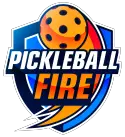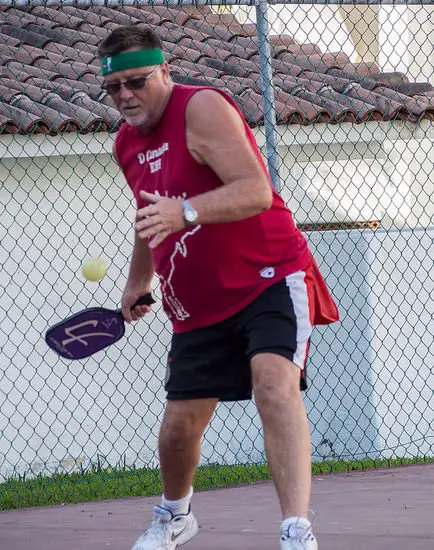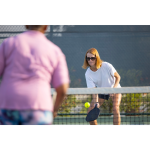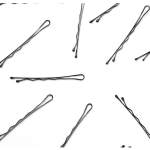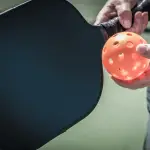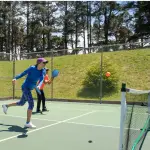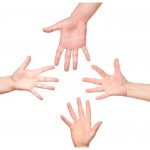When I first started playing Pickleball, my serves were illegal. I knew about hitting underhand and contacting the ball below the waist. I was able to execute this part of the serve. However, some of my habits from racquetball made it difficult for me to keep the paddle head below my wrist.
It took a few weeks to figure out but with practice I could hit a legal serve in Pickleball. In fact, I still hit 100 serves in practice three times per week to keep my form strong. Since the serve was a challenge for me, I thought I would take you through some steps on how to improve your serve in Pickleball by starting with the basics and then discussing how to generate more power.
I created a video version of how to improve your serve here if you prefer this style of learning.
Otherwise, read on as the article covers the following:
- Basics of serving in Pickleball
- How to practice
- Strategy
- How to increase the speed of the your Pickleball serve
- Spin
- Routine
- Outside elements
- Question and Answer
Basics
Start with your feet behind the baseline when serving in Pickleball. To maximize precision and power, stand perpendicular to the baseline. Your feet may not touch the baseline. When serving the ball, it cannot bounce first. You must hit the ball in the air and contact it below your waist. The Pickleball serve must be hit underhand. This differs from a sport like tennis where you can hit the serve overhead. The paddle head must be below your wrist when you strike the ball.
Here’s a picture to show you what it means for the paddle head to be below your wrist. Note the blue line I have drawn showing you the angle of his paddle in relationship to his wrist.
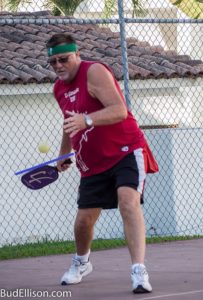
Be sure to hit the ball over the net beyond the kitchen line in the court diagonally to where you are standing. The ball should bounce between the kitchen line and baseline for the serve to be considered good. If you hit the ball in the net and it does not go over, it is a fault. Remember you only get one chance to hit a good serve in Pickleball
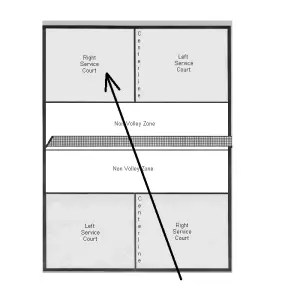
Where to Stand When Serving
I like to stand midway between the center line and side line. This give me the advantage of better court position compared to standing closer to the side line or center line. However, by standing closer to the center line, you have a better angle to hit down the T. I don’t recommend this as it’s very difficult to ace someone in Pickleball when playing at intermediate or higher levels. Plus, you have to be ready for a shot near the sideline when your opponent returns the ball since you are standing so far away from it.
After you serve, you need to get ready for your opponents’ return. I move quickly from a position perpendicular to the baseline to one where my feet are parallel to the baseline. This gives me the ability to shuffle quickly to the right or left or to move forward to return the ball.
How to Practice
I’m amazed at how few people practice serving outside of playing a game. The benefit of practicing is you get to hit many more balls in 30 minutes of drills compared to 30 minutes of playing. I like to put targets deep in the court so I know where to aim my serve when practicing. It can be a challenge to find targets for the court but I found some on Amazon which are a good value and do the job.
When I practice serving, I start by hitting 20 serves from the right side of the court. Then I hit 20 serves from the left side of the court. My goal is to get 100% of these serves in. Next, I hit the same amount of serves from both sides of the court but this time my goal is different. My focus is on the mechanics of the serve where I am generating more power. Since I’m experimenting, I’ll hit a few balls in the net but that’s ok if I’m trying something new. Finally, I hit my last 40 serves with my focus on placement. Besides being deep in the court, I put targets near the center line and side line. I don’t usually hit 100% of these serves in but I think I am usually at about the 90% level.
Serving Strategy
The goal when serving is to consistently hit the ball deep in the court to the weaker side of your opponent. When I first started playing Pickleball, I didn’t hit the ball very deep in the court. I corrected this by contacting the ball higher. I now aim to hit the serve within a foot of the baseline.
The weaker side is usually the person’s backhand so aim accordingly. Avoid hitting the short angle serve in Pickleball since your opponent can hit a short angle back at you that is difficult to defend.
The big difference between serving in Pickleball and tennis is the serve is not as big of a weapon. In tennis, you have a real advantage as the server. You can try to ace your opponent or hit a strong serve that puts your opponent on the defensive. Since the serve is underhand in Pickleball and you only get one chance to hit it in, it is more of a neutral shot.
How to increase Power
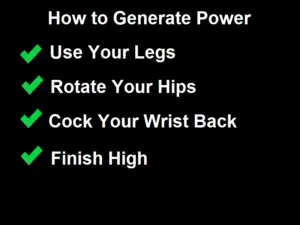
While the goal of the Pickleball serve is to make sure you get the ball in, hitting deep in the court with pace is necessary at higher levels. So, how do you increase of the speed of your serve? Here’s an overview with details below.
Most beginners have a service motion similar to someone throwing a bowling ball. They have an open stance with their feet parallel to the baseline. Beginners bring their paddle back close to their body with the paddle head facing down. The motion is underhand with a high finish. The problem with this style is you don’t get the benefit of using other parts of your body in the motion since the swing relies almost entirely on your arm.
To increase power, stand perpendicular to the baseline. Then bend your knees and start your service motion. You should start to open your hips as you begin as this allows you to drive through the ball and increase your service speed.
You should also cock your wrist back. The photo below on the left shows the start of the service motion. They have a relaxed grip and their wrist is not tilted back. The photo below on the right shows a change in angle of the wrist as it is now cocked back. The wrist will stay at this angle until contact is made with the ball so as to generate more power on the serve.
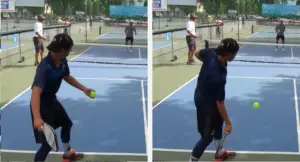
The final step to generating more speed on your serve is to follow through and finish high. The worst thing you can do is to stop your service motion early since this decreases power and can also hurt your arm. Make sure to follow all of the way through and finish high as this will put top spin on the ball.
Using Spin on the Serve
Most players put spin on the serve naturally if you are going from a low to high motion. This puts top spin on the ball much like what you see in tennis. If someone hits with heavy top spin it can be a challenge to return especially if the ball is hit deep in the court and you are standing at the baseline.
I have a natural slice from my background playing racquetball, meaning I hit under spin on the serve. You don’t see this much in Pickleball since so many players have a tennis background. The advantage of under spin is the ball stays low so my opponent has to hit up on the ball to get it over the net. I find this serve very effective against beginning and intermediate players. Against advanced players it’s not as likely to score a point since they can consistently hit the serve return in regardless of the spin on the ball.
Besides top spin and under spin, you’ll see players hitting spin to make the ball bounce and take a sharp angle to the left or right. I play against one opponent who has perfected this serve and it can force a weak return from even advanced players if hit near the center or side line.
You may wonder if your paddle impacts your spin on the serve. The answer is absolutely! Certain paddles are better for spin so they can help your serve. Here’s our post on the best Pickleball paddles for spin if you want to add this component to your serve.
Outside Elements
I had only played Pickleball indoors until I went to Hilton Head Island, South Carolina and played at Palmetto Dunes. They only have outdoor courts and the first day I played even the locals said it was one of the windiest days. This made it a challenge for me to get my serve in as I do not need to account for wind direction when playing indoors. Needless to say I hit many serves out of the court the first hour I played. The second hour was better as I adjusted to the wind which was gusting across the court. This means I hit the ball further to the right than normal in order to ensure my serve went in the court. The next few times I played outdoors it was windy but not as strong as the first day. Still, I needed some level of adjustment almost everyday I played outdoors.
Routine
It’s important to have a routine before you start your service motion because it helps you to focus. Part of your routine can be bouncing the ball two times before you serve. It can be spinning your paddle in your hand. It can even be a combination of both these behaviors or something else. Since you only have one chance to get your serve in, routines can help you gain rhythm and focus so I would suggest creating one comfortable for you if you don’t have one already.
Q & A
What if I serve and hit my opponent?
If you serve and hit your opponent, you score a point. This is the case whether you hit the person you are serving to or their partner. I’ve played many times with people who hit a serve considered out because it lands on the opposite of the center line from where it should. If their partner catches the ball
in the air, the serving team scores a point. The player cannot touch the ball until after it bounces.
Where can my partner stand when I serve?
As long as your partner is standing on your side of the net, he or she can stand anywhere. This means they can stand on or off the court. While your partner can stand anywhere on your side of the net, it’s best to be deep in the court as the serve return needs to bounce before the serving team hits the ball. The sequence goes 1) serve 2) serve return 3) third shot hit by the serving team. Remember the ball must bounce before the serving team hits the third shot.
What if the serve hits the net?
If the serve hits the net and bounces in the kitchen, it is a fault. When the serve hits the net and bounces outside of the court, it is a fault. If the serve hits the net and bounces behind the kitchen and in the court, the serve is replayed.
What if I lose track of the score?
If you can remember who the first server is in doubles then you should be able of figure out the score. This is because your score is always even when the first server is serving from the right side of the court. If the first server is serving from the left side of the court, the score is an odd number.
What is I miss the ball on a serve?
If you start your service motion and take a swing at the ball but miss, it is a fault. You can, however, toss the ball up and let it hit the ground as long as you do not swing and miss. If this happens, you serve again.
What if I hit my partner on the serve?
If you hit your partner on the serve, it is a fault.
What if the serve lands in the non-volley zone?
If the serve lands in the non-volley zone, it is a fault.
